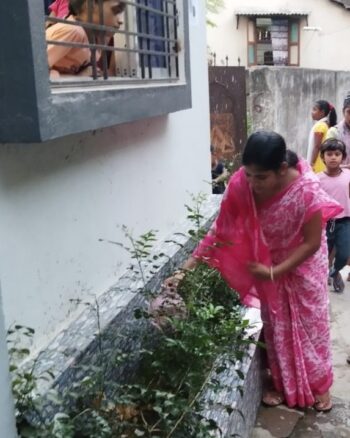
Introduction:
“Sometimes it takes a natural disaster to reveal a social disaster.”- Jim Wallis
Environmental disasters pose fatal immediate and significant long-term challenges to societies worldwide, affecting people from all walks of life. However, it is often the marginalized communities that bear the brunt of these catastrophes, exacerbating existing inequalities and compounding their already vulnerable positions. Rising sea levels, severe draughts, the melting of the polar caps, the more frequent and devastating natural disasters all raise demand for humanitarian assistance and disaster relief.
A person’s gender, age, physical abilities, ethnicity and sexuality, for instance can lead to a higher risk of death or injury, longer recovery times or greater risk of mental or physical trauma. Equally, these groups may also bring unique skills, resources and knowledge to reduce risk and overcome the aftermath of a disaster. In this essay, we will explore the impact of environmental disasters on marginalized populations and propose strategies for improvement in our own areas.
- Disproportionate Impact:
Environmental disasters, such as volcanic eruptions, cyclones, floods, tsunamis, earthquakes, droughts, and wildfires etc., tend to have a disproportionate impact on marginalized communities and minority groups like older peoples, women and girls. These populations often belong to low-income groups, reside in low-lying areas, degraded environments, or regions prone to natural hazards due to limited resources and socioeconomic constraints. Consequently, they face heightened exposure to the risks associated with these disasters. In particular, each year the coastal regions of Andhra Pradesh, Odisha, West Bengal and Bangladesh experience the catastrophic effect of Tropical Cyclone.
- Health and Well-being:
Marginalized communities are more susceptible to adverse health effects resulting from environmental disasters. Limited access to healthcare facilities, inadequate nutrition, and pre-existing health conditions leave them vulnerable to the physical and mental health consequences of these calamities. For example, prolonged exposure to polluted air or contaminated water can lead to respiratory illnesses, waterborne diseases, and mental distress.
- Displacement and Homelessness/Forced Migration:
Environmental disasters frequently result in displacement, with marginalized communities often being hit the hardest. These populations may lack the resources and support networks necessary to rebuild their lives, leading to prolonged periods of homelessness and insecurity. Displacement exacerbates existing social inequalities and hinders the marginalized from breaking free from the cycle of poverty and vulnerability. To give you an idea, hundreds of thousands people lost their houses and every other belongings by the Super Cyclonic Storm ‘Amphan’ which stroke the Ganges Delta in May, 2020 causing over US$ 13 billion of damage making it the costliest cyclone ever recorded in the North Indian Ocean, surpassing the record previously held by Cyclone ‘Nargis’ of 2008.
- Loss of Livelihoods and Food Insecurity:
Marginalized communities often rely on subsistence farming, fisheries, collecting honey from jungles, informal labor, or traditional occupations tied to natural resources. Environmental disasters can destroy crops, damage infrastructure, and deplete natural resources, leaving these communities without livelihoods and increased food insecurities. The loss of income further deepens their poverty and limits their ability to recover from such disasters.
- Environmental Justice and Empowerment:
While natural disasters capture headlines and national attention short-term, the work of recovery and rebuilding is long-term. To address the effect of environmental disasters on marginalized people, it is imperative to promote environmental justice and empower these communities. Governments, civil society organizations, and individuals can take the following steps:
Prevention Preparedness
| Disaster Management Cycle |
Recovery Response
- Inclusive Disaster Planning: Incorporate marginalized communities’ voices and perspectives into disaster planning, ensuring their needs and vulnerabilities are adequately addressed. Moreover, revised zoning and land use management and efforts would make community more resilient to a disastrous event.
- Improved Infrastructure: Invest in resilient infrastructure that safeguards marginalized communities from the impacts of environmental disasters, such as early warning systems, safe evacuation routes, change in local building codes and climate-resistant housing.
- Access to Essential Services: Enhance access to healthcare, clean water, sanitation facilities, and education for marginalized communities, especially during and after disasters.
- Livelihood Diversification: Support marginalized communities in diversifying their livelihood options, providing training, and resources for alternative income-generating activities that are resilient to environmental shocks.
- Climate Education and Awareness: Promote climate literacy and awareness among marginalized communities to empower them to make informed decisions regarding their environment and adaptation strategies.
- Strengthen Social Safety Nets: Establish social safety nets that provide financial support and social protection to marginalized communities during and after environmental disasters. Moreover, identification of high risk areas and designating facilities for emergency use would make a world of difference in the risk associated areas.
- Building an inclusive NDRA (National Disaster Risk Assessment): A national disaster risk assessment that is inclusive and helps all within a community relies on the appropriate recognition, appreciation and understanding of marginalized communities. Like, in case of ‘Amphan’, NDRF (National Disaster Response Force) teams worked day and night to bring the normalcy and proved its worth by removing over 8000 uprooted trees, 1250 Electric Poles and cleared more or less 3000 km of roads. Teams also assisted State administration in mass evacuation of more than 12 lakh people to safer places.
Conclusion:
Environmental disasters have a profound impact on marginalized populations, exacerbating their vulnerability and perpetuating social inequalities. We cannot stop natural disasters but we can arm ourselves with knowledge: so many lives wouldn’t have to be lost if there was enough disaster preparedness. However, by adopting inclusive approaches, investing in resilient infrastructure, and empowering these communities, we can mitigate the effects of these disasters. It is crucial that governments, organizations, and individuals prioritize the needs of marginalized people and work together by adopting Technology- Driven, Active, Multi-Hazard and Multi-Sectorial strategy to build a more equitable and resilient future. By doing so, we can create a society where the most vulnerable are protected and afforded the opportunities necessary to thrive despite the challenges posed by environmental disasters.
Mr. Victor Alam from Murshidabad has written this article and opinion is his personal
